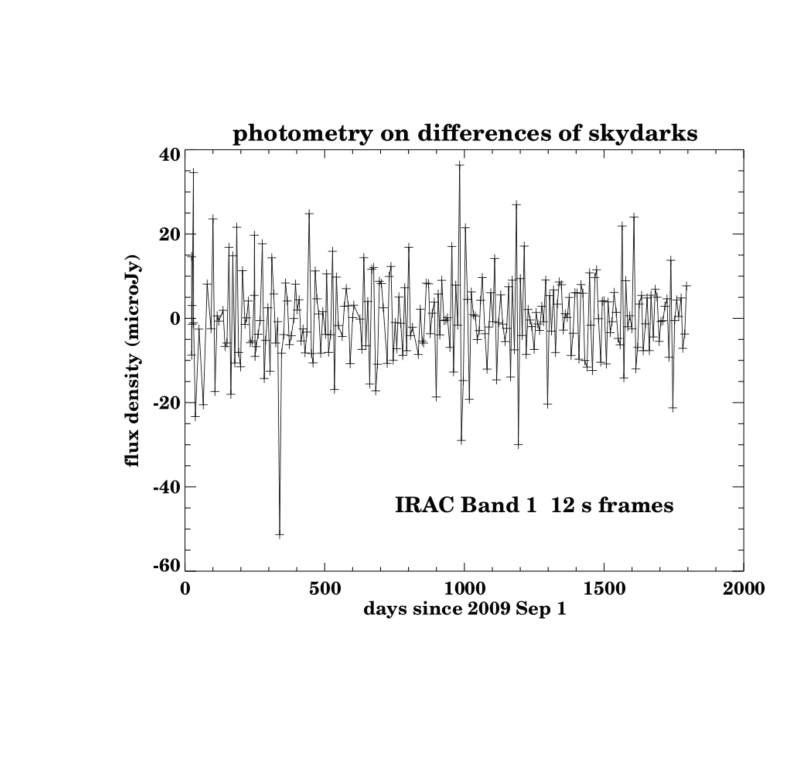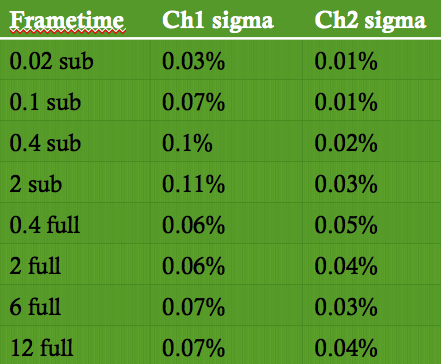IRAC High Precision Photometry
Both IRAC channels sometimes show residual images of a source after it has been moved off a pixel. Beyond intrapixel gain effects, we expect these persistent images to be the next largest source of noise in multi-epoch high precision photometry observations. When a pixel is illuminated, a small fraction of the photoelectrons are trapped. The traps have characteristic decay rates, and can release a hole or electron that accumulates on the integrating node long after the illumination has ceased. Persistent images on the IRAC array start out as positive flux remaining after a bright source has been observed. At some time later the residual images turn from positive to negative, so that they are actually below the background level (trapping a hole instead of trapping an electron). Positive and negative persistent images in either the aperture or background annulus in either the dark frame or the science frames can lead to artificial increases or decreases in aperture photometry fluxes. Persistent images are pervasive. We will use the terms persistent images and latents interchangeably throughout this discussion.
Short term persistent images start at about 1% of the source flux and can be seen to decay over the course of minutes to hours. We show here an examination of long term latents by averaging all warm mission ch1 darks at the 12s frame time into a “superdark”. This movie shows the difference between the mission long super dark and each of the ~250 weekly darks from Sep 2009 to Aug 2014. The movie reveals low-level long term latent patterns. While some patterns change weekly, some persist over multiple weeks. In addition to the movie, we show here a plot of the change in photometry on a blank region in those difference images for the same ch1 12s frame time. Using the size of the fluctuations in the blank sky photometry, we then calculate the percentage effect that the latents have on photometry which is shown for all frame times and both channels in the table below. The apparent pinging back and forth from week to week at the level of 10 - 15 microJy is likely due to the "first frame effect" because of the way that the skydarks are observed. We currently have no way of removing this effect, so it remains in our calculation of the latents. Latents have a much stronger effect in ch1 than ch2, and are strongest at 0.4 and 2s subarray frame times.
Beyond knowing of their existence, it is very difficult to quantify these low level latent images, especially since we know that the latents are both growing with new observations dependent on the specific observing history, and shrinking over time as they dissipate. Our superdark analysis shows that persistent images can effect photometry at the 0.1% level (see Figure) . In order to remove this effect from high precision photometry observations, we recommend observing a dither pattern on a blank region before and after each exoplanet observation. This will ultimately provide a dark observation which is specific for each observation. Additionally, these latent measurements will assist the IRAC team in measuring the impact of latents on science observations.

Figure 1: Skydark Variations in ch1 over the course of the warm mission. The Y-axis is a difference of the flux density present in the darks after an average dark frame has been removed.

Table 1: Approximate levels of the latent fluxes as a function of channel and frame time.